The title “We are never ever, ever getting back together- cell division” means that the two daughter cells formed as a result of Mitosis never going to return to become parent cells again. This article focuses on mitotic cell division.
To read the introductory part of cell division, go through the link –https://www.anthromania.com/2021/06/16/how-cells-in-our-body-divide/
Mitosis
Mitos means thread or fibril. Mitosis term is given by Flemming (1882).
Mitosis, also known as Equational Division or Somatic cell division refers that chromosomes equally distributed both quantitatively and qualitatively from parent cells to two daughter nuclei. This division maintains the chromosome number for generations.
Mitosis involves the division of the nucleus which is followed by the division of the cytoplasm. When the cell is not ready to divide then it is known as the Interphase stage. During this phase, chromosomes are not clearly visible.

An elaborate process is necessary for forming two daughter cells out of the parent cell. The whole process is studied under 4 stages–
Prophase

Chromosomes are visible as long, slender and coiled threads. They get shortened and thicken.
Each chromosome is seen to be made of two identical strands known as Chromatids lined against each other throughout the length. A chromosome bears a constriction, a region of attachment of two chromatids at a single point known as centromere or kinetochore.
During this stage, the nucleus and nuclear membrane disappear and a spindle shape body known as a nuclear spindle or mitotic spindle is formed.
As prophase advances, the chromatids become closely coiled and the double nature of chromosomes disappears.
Metaphase
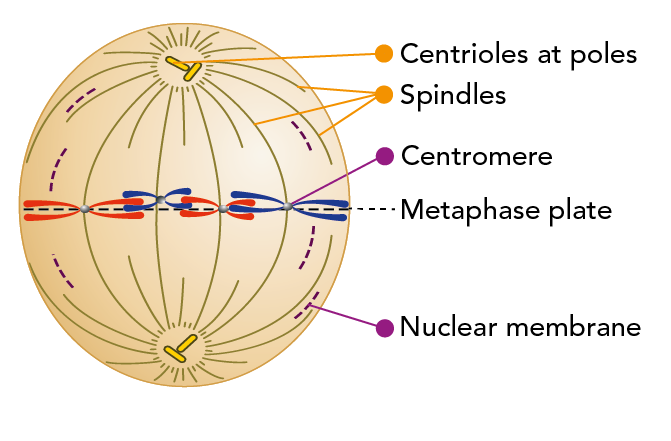
During this phase, the chromosomes are radially oriented in the equatorial plane. The two chromatids lie parallel to each other. The spindle extends into the nuclear area and occupies the centre of the cell. The spindle gets attached to the centromere. Fibres of the spindle that are attached to chromosomes are called chromosomal fibres (discontinuous fibres or tactile fibres) while others are known as continuous fibres.
Anaphase

In this stage, the chromosomes begin to disappear. Each centromere divides equally. First, the two centromeres and later on the chromatids are pulled apart. The two halves or identical sets of chromatids move to the opposite poles of the spindle. Thus the two chromatids become separated from each other. Each group contains the same no. of chromosomes.
Telophase

It is the reverse of prophase. During this phase, a nuclear envelope forms around each group at the opposite poles. The spindles disappear. Now the cell membrane gets constricted in between which results in the formation of two daughter cells. Each daughter cell has the same amount of cytoplasm and nucleus.
Significance of mitosis
- Equal distribution of chromosomes in the daughter cells in terms of quality and quantity.
- Maintains a constant no. of chromosomes from generation to generation in all body cells of an organism.
- Maintains purity of gametes.
Read more :
- Lamarck’s Theory of Evolution
- Bipedalism and Structural Changes
- Natufian Culture
- Cache of ancient coins dating back 100,000 years unearthed in Japan
- James George Frazer
Also, read other science-related topics-


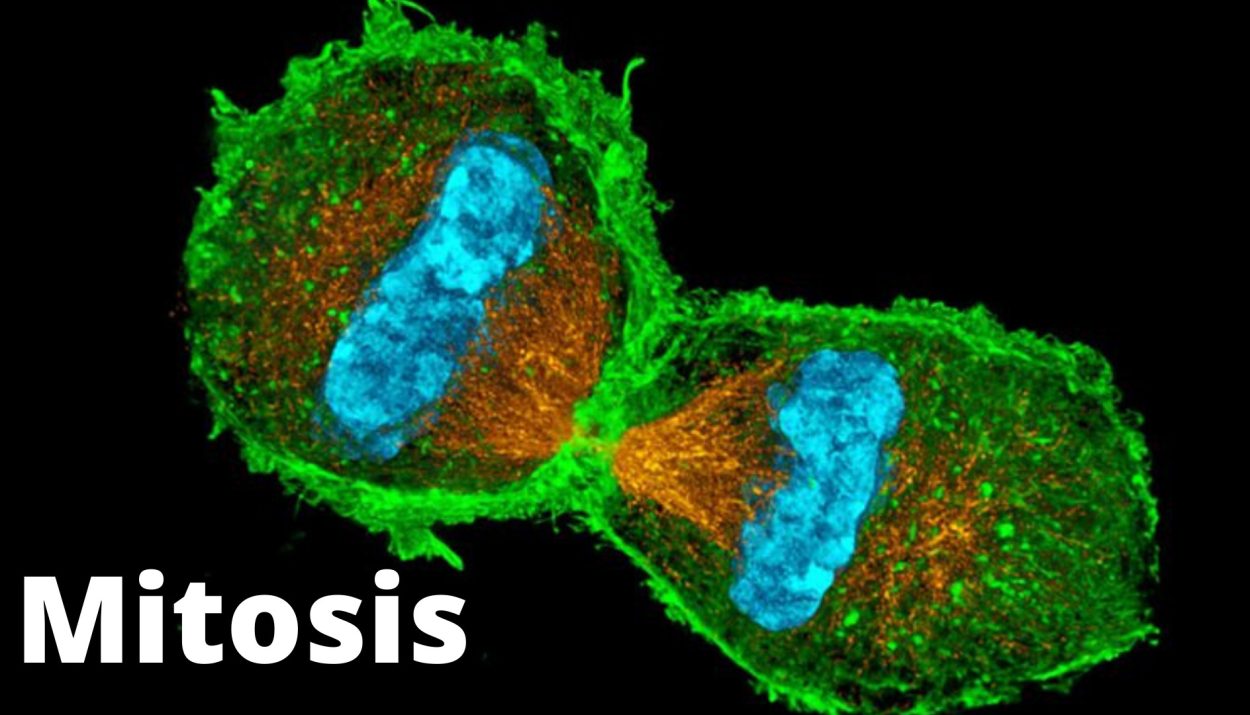


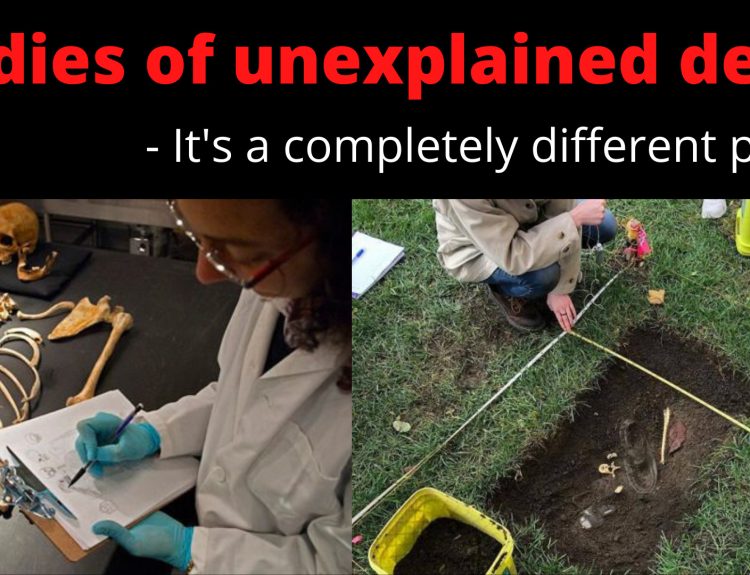
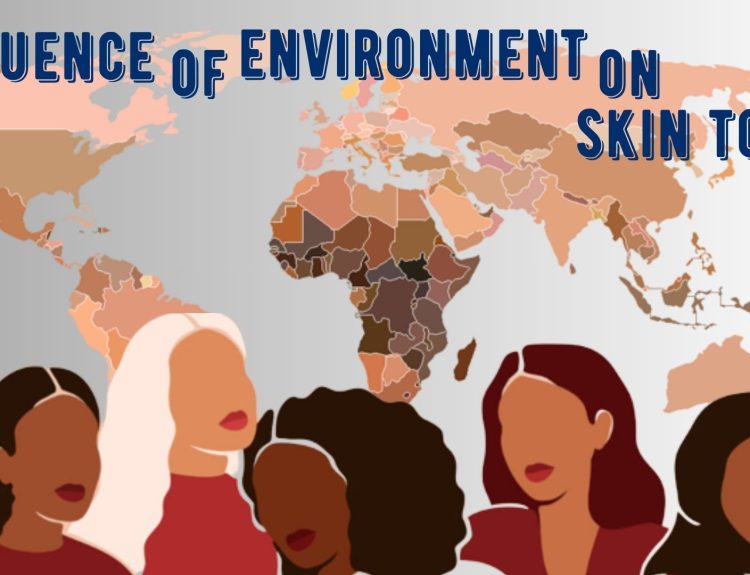
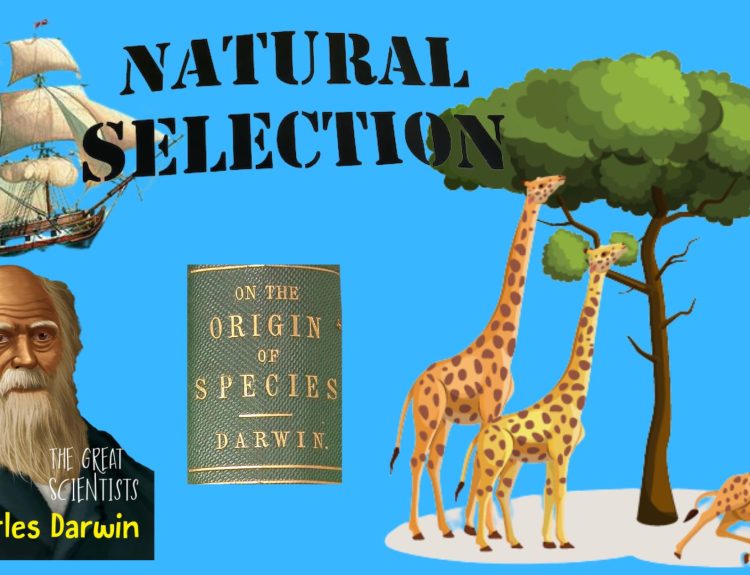
82 Comments
K VINEETA
2 years agoThank you for appreciating my work.
Darwin
2 years agoHi there friends, how is all, and what you wish for to say regarding this article, in my view
its truly amazing designed for me.
http://onlinetutors.group/index.php?qa=user&qa_1=tonguemask98
2 years agoA motivating discussion is definitely worth comment.
I do believe that you ought to write more on this subject matter, it might not be a taboo subject but generally
people do not talk about such topics. To the next! Kind regards!!
http://www.docspal.com/viewer?id=wcjrtiin-20200658
2 years agoI am not sure where you are getting your information, but good topic.
I needs to spend some time learning much more
or understanding more. Thanks for great information I was looking for this info for my mission.
http://www.drugoffice.gov.hk/gb/unigb/telegra.ph/Minecraft-Servers-And-The-Art-Of-Time-Administration-02-12
2 years agoWhat’s Taking place i am new to this, I stumbled upon this I’ve discovered It positively
helpful and it has aided me out loads. I am hoping to contribute
& aid different users like its aided me. Great job.
manchesterclopedia.win
2 years agoNice blog here! Also your web site loads up fast! What host are you using?
Can I get your affiliate link to your host? I wish my site
loaded up as fast as yours lol
discuss
2 years agoHello there! I simply would like to offer you a big thumbs up
for the excellent information you have got here on this
post. I’ll be returning to your blog for more soon.
studyroom.co.za
2 years agoExcellent weblog here! Additionally your website lots up
very fast! What web host are you the use of? Can I am getting your
associate hyperlink to your host? I desire
my web site loaded up as fast as yours lol
pediascape.science
2 years agoThanks to my father who shared with me about this website,
this web site is genuinely amazing.
wiki.openn.eu
2 years agoAmazing issues here. I am very glad to look your post.
Thanks a lot and I’m looking forward to touch you. Will you
kindly drop me a e-mail?
manchesterclopedia.win
2 years agoHmm it appears like your blog ate my first comment (it was extremely
long) so I guess I’ll just sum it up what I had written and say, I’m thoroughly
enjoying your blog. I too am an aspiring blog blogger but I’m
still new to everything. Do you have any recommendations for newbie blog writers?
I’d genuinely appreciate it.
http://ezproxy.cityu.edu.hk/login?url=https://atlwood.net/
2 years agoHi to every one, the contents present at this web site are genuinely amazing for people experience, well, keep up the nice work fellows.
http://answerslistly.com/index.php?qa=user&qa_1=chivemonday5
2 years agoI have read so many posts on the topic of the blogger lovers however this article is actually a nice piece of writing, keep it up.
www.inventables.com
2 years agoWith havin so much written content do you ever run into any issues
of plagorism or copyright infringement? My site has
a lot of unique content I’ve either authored myself or outsourced but it appears
a lot of it is popping it up all over the internet without my authorization. Do you know any
solutions to help protect against content from being ripped off?
I’d really appreciate it.
zenwriting.net
2 years agoI think that is among the such a lot vital info for me. And i am happy studying your article.
But wanna remark on few basic issues, The site taste is perfect, the articles is in reality excellent :
D. Excellent process, cheers
https://scientific-programs.science/wiki/Guaranteed_No_Stress_Minecraft_Server
2 years agoHowdy! I know this is somewhat off topic but I was wondering if you
knew where I could find a captcha plugin for my comment form?
I’m using the same blog platform as yours and I’m having problems finding one?
Thanks a lot!
bbs.weipubao.cn
2 years agoGreat items from you, man. I’ve take note your stuff previous to and you are simply extremely magnificent.
I really like what you have bought right here, really like what
you’re saying and the best way in which you say it. You’re making it entertaining
and you continue to care for to stay it sensible. I cant wait to
learn much more from you. This is really a tremendous website.
https://yogaasanas.science/wiki/Minecraft_Server_Stats_These_Numbers_Are_Real
2 years agoPretty element of content. I simply stumbled upon your site and in accession capital to claim that
I acquire actually enjoyed account your blog posts. Any way I will
be subscribing in your feeds and even I success you get admission to consistently quickly.
sc.devb.gov.hk
2 years agoHey There. I found your blog using msn. This is a very well written article.
I will be sure to bookmark it and return to read more of your useful
info. Thanks for the post. I’ll certainly comeback.
spamdb.science
2 years agoHi there, just wanted to say, I liked this blog post.
It was helpful. Keep on posting!
http://twitter.com/home?status=http://xurl.es/wkah6
2 years agoThanks for the marvelous posting! I definitely enjoyed reading it, you may be a great author.
I will make sure to bookmark your blog and will come back at some point.
I want to encourage continue your great work, have a nice day!
www.goodreads.com
2 years agoI really like your blog.. very nice colors & theme.
Did you create this website yourself or did you hire someone to do it for you?
Plz answer back as I’m looking to create my own blog and would
like to know where u got this from. cheers
myspace.com
2 years agoI have been surfing online more than 2 hours today, yet
I never found any interesting article like yours. It is pretty worth enough for me.
In my opinion, if all webmasters and bloggers made good content as
you did, the net will be much more useful than ever before.
wikidot.win
2 years agoHaving read this I thought it was very informative.
I appreciate you spending some time and energy to put this
information together. I once again find myself personally spending a lot of time both reading and posting comments.
But so what, it was still worth it!
pattern-wiki.win
2 years agoHey! Someone in my Facebook group shared this site with
us so I came to take a look. I’m definitely loving
the information. I’m book-marking and will be tweeting this to my followers!
Outstanding blog and fantastic design and style.
cqms.skku.edu
2 years agoI have been exploring for a little for any high quality articles or weblog posts on this sort
of house . Exploring in Yahoo I eventually stumbled upon this
site. Studying this info So i am happy to convey that I have a very good uncanny feeling I found
out exactly what I needed. I so much no doubt will make
certain to don?t disregard this site and provides it a glance regularly.
https://godotengine.org/qa/index.php?qa=user&qa_1=boyconga3
2 years agoHi there i am kavin, its my first occasion to commenting anywhere, when i read
this article i thought i could also make comment due to this
good article.
scientific-programs.science
2 years agoI simply could not go away your web site prior to suggesting that I really enjoyed the standard information a person provide on your guests?
Is gonna be back steadily in order to inspect new posts
https://timeoftheworld.date/wiki/4_Effective_Methods_To_Get_Extra_Out_Of_Minecraft_Server_Software
2 years agoPretty nice post. I just stumbled upon your weblog and wanted to mention that I
have really loved browsing your weblog posts.
After all I will be subscribing to your feed and I hope you write once more
soon!
pacesetter.info
2 years agoIt’s really a nice and helpful piece of info. I’m happy that you simply shared this helpful information with us.
Please keep us informed like this. Thank you for sharing.
https://scientific-programs.science/wiki/Ten_Gorgeous_Examples_Of_Beautiful_Private_Rpg
2 years agoHello friends, its enormous paragraph concerning cultureand completely explained, keep it up all the time.
http://www.trungtamytechomoi.com.vn/Default.aspx?tabid=120&ch=15156
2 years agoThanks for another excellent article. Where else could anyone get that type of
info in such an ideal manner of writing? I’ve a
presentation next week, and I am at the look for such
info.
https://targowisko.net/archiwa/author/peaceatm1
2 years agowonderful issues altogether, you just won a new reader. What may you recommend about your put up
that you simply made a few days in the past? Any positive?
https://cameradb.review/wiki/You_Make_These_Best_Mods_For_Minecraft_Errors
2 years agoNo matter if some one searches for his required thing, thus
he/she wants to be available that in detail, so that thing is maintained over here.
myspace.com
2 years agoEverything is very open with a precise clarification of the
challenges. It was really informative. Your site is useful.
Thanks for sharing!
https://splice.com/dinghynerve5
2 years agoI couldn’t refrain from commenting. Very well written!
ezproxy.cityu.edu.hk
2 years agoI don’t even know the way I ended up right here, however I
believed this post was once good. I do not recognise who you are but certainly you’re going to a famous blogger
when you aren’t already. Cheers!
https://www.pinterest.com/epoxyhandle58/
2 years agoI have been surfing online more than 3 hours today, yet
I never found any interesting article like yours.
It’s pretty worth enough for me. Personally, if all website owners and bloggers made good
content as you did, the internet will be much more useful than ever
before.
mirintima96.ru
2 years agoI have read so many posts on the topic of the blogger lovers
except this post is really a good article,
keep it up.
https://pediascape.science/wiki/What_To_Do_About_Minecraft_Server_Earlier_Than_It_Is_Too_Late
2 years agoSince the admin of this web page is working, no uncertainty very soon it will be famous, due to its quality contents.
discuss
2 years agoHi, Neat post. There is a problem together with your website in internet explorer, may test
this? IE nonetheless is the market chief and a huge portion of people will miss your fantastic writing because of this problem.
discuss
2 years agoI enjoy what you guys tend to be up too. Such clever work and
exposure! Keep up the fantastic works guys I’ve you guys to blogroll.
https://sciencewiki.science/wiki/Minecraft_Server_Host_Options
2 years agoHowdy! Someone in my Myspace group shared this site with us so I came to check it out.
I’m definitely loving the information. I’m bookmarking and will be
tweeting this to my followers! Wonderful blog and superb design and
style.
http://www.upcyclem.com/author/coneanimal09/
2 years agoSpot on with this write-up, I honestly think this amazing site needs a great
deal more attention. I’ll probably be returning to read through more,
thanks for the information!
https://tajenbali.biz
2 years agoA person necessarily help to make significantly articles I’d state.
That is the first time I frequented your web page and so far?
I surprised with the analysis you made to create this particular publish incredible.
Excellent activity!
timeoftheworld.date
2 years agoKeep this going please, great job!
https://flyzone1.tumblr.com/post/675520681220390912/the-3-really-apparent-methods-to-minecraft-server
2 years agoHaving read this I believed it was extremely enlightening.
I appreciate you finding the time and effort to put this informative article together.
I once again find myself personally spending way too much time both reading and posting comments.
But so what, it was still worth it!
http://util71.ru/user/zebraseed77/
2 years agoRemarkable! Its in fact awesome post, I have
got much clear idea on the topic of from this piece of writing.
https://botdb.win/wiki/The_following_three_Issues_To_instantly_Do_About_Minecraft_Server_Host
2 years agoIt’s an awesome article for all the online users; they will obtain benefit
from it I am sure.
wiki.openn.eu
2 years agoVery soon this website will be famous among all blog users, due to it’s fastidious articles
http://el-jeel.com/index.php?qa=user&qa_1=llamajumper90
2 years agoKeep on writing, great job!
https://zenwriting.net/polocomic24/unanswered-questions-into-minecraft-launcher-revealed
2 years agoGood info. Lucky me I discovered your site by accident (stumbleupon).
I’ve book-marked it for later!
demo2-ecomm.in.ua
2 years agoMy family all the time say that I am killing my time here at net, however I know I am getting knowledge daily by reading
such fastidious content.
http://www.astro.wisc.edu/?URL=squareblogs.net/nervecomb71/within-the-age-of-data-specializing-in-download-minecraft
2 years agoHurrah, that’s what I was searching for, what a stuff! existing
here at this blog, thanks admin of this web page.
https://historydb.date/wiki/The_Lazy_Mans_Guide_To_Minecraft_Server_Host
2 years agoThanks for finally talking about > We are never ever, ever getting back together – Mitosis
– AnthroMania < Loved it!
writeablog.net
2 years agoHave you ever thought about including a little bit more than just your articles?
I mean, what you say is fundamental and everything.
However think about if you added some great images or
video clips to give your posts more, “pop”! Your content is excellent but with images and
clips, this site could certainly be one of the best in its niche.
Amazing blog!
https://historyhub.history.gov/external-link.jspa?url=http://bvkrongbong.com/Default.aspx?tabid=120&ch=417099
2 years agonaturally like your web site but you need to test the spelling on several of your posts.
A number of them are rife with spelling issues and I in finding it very bothersome to tell
the reality on the other hand I’ll certainly come again again.
https://historyhub.history.gov/external-link.jspa?url=https://yarabook.com/post/1564088_https-www-occities-org-for-this-you-will-need-to-subscribe-to-a-server-and-you-c.html
2 years agoRemarkable things here. I am very glad to look your post.
Thanks a lot and I am having a look ahead to touch you.
Will you please drop me a mail?
http://studyroom.co.za/index.php?qa=user&qa_1=soyzinc4
2 years agoI’m not sure why but this weblog is loading incredibly slow for me.
Is anyone else having this issue or is it a issue on my end?
I’ll check back later on and see if the problem still exists.
onlinetutors.group
2 years agoHello just wanted to give you a quick heads up.
The words in your content seem to be running off
the screen in Internet explorer. I’m not sure if this is a format issue or something
to do with browser compatibility but I thought I’d post to let you
know. The design look great though! Hope you get the problem solved
soon. Cheers
www.socialbookmarkssite.com
2 years agoExcellent post. I was checking constantly this blog and I’m impressed!
Extremely helpful info particularly the last part 🙂 I care
for such info much. I was looking for this particular info for a
long time. Thank you and good luck.
portal.uaptc.edu
2 years agoWhat’s up i am kavin, its my first occasion to commenting anyplace, when i read this article i
thought i could also make comment due to this brilliant post.
fkwiki.win
2 years agoIt’s wonderful that you are getting ideas from this paragraph as well as from our argument made at this time.
bbs.now.qq.com
2 years agoWhat’s up, every time i used to check web site posts here
early in the daylight, as i like to find out more and more.
www.transtats.bts.gov
2 years agohello there and thank you for your info – I’ve definitely picked up
anything new from right here. I did however expertise a few technical points
using this web site, as I experienced to reload the site many times previous to I
could get it to load properly. I had been wondering if your
web host is OK? Not that I’m complaining, but slow loading instances times will very
frequently affect your placement in google and can damage your high-quality score if ads
and marketing with Adwords. Anyway I am adding this RSS to my e-mail and
can look out for much more of your respective intriguing content.
Ensure that you update this again soon.
historyhub.history.gov
2 years agoWe are a group of volunteers and opening a brand new scheme in our community.
Your site offered us with valuable information to work on. You’ve
done an impressive activity and our whole neighborhood shall be grateful to you.
marvelcomics.faith
2 years agoI love reading an article that can make people think.
Also, many thanks for allowing me to comment!
https://fabnews.faith/wiki/OMG_The_perfect_Top_Minecraft_Servers_Ever
2 years agoQuality posts is the crucial to invite the people to visit the website, that’s
what this web page is providing.
notes.io
2 years agoIt’s awesome designed for me to have a web page, which is good in favor of my know-how.
thanks admin
wifidb.science
2 years agoFantastic goods from you, man. I have understand your stuff previous to
and you are just extremely excellent. I really like what you have acquired
here, certainly like what you’re saying and the way in which you say it.
You make it enjoyable and you still care for to
keep it smart. I can’t wait to read much more from you.
This is actually a terrific web site.
https://genius.com/cobwebyew66
2 years agoHeya i am for the primary time here. I came across this board and I in finding It really helpful & it
helped me out a lot. I hope to offer one thing back and help others like you helped
me.
http://lamimbestanswer.xyz/index.php?qa=user&qa_1=blackbronze17
2 years agoWhat’s Happening i’m new to this, I stumbled
upon this I have found It absolutely helpful and it has helped me out loads.
I hope to give a contribution & aid different customers like its aided me.
Good job.
http://mm2kiwi.apan.is-a-geek.com/index.php?title=6_Superb_Tips_To_Get_Probably_The_Most_Out_Of_Your_Servers_Minecraft
2 years agoHaving read this I thought it was extremely enlightening.
I appreciate you finding the time and energy to put this article
together. I once again find myself personally spending way
too much time both reading and posting comments. But so
what, it was still worthwhile!
https://manchesterclopedia.win/wiki/Four_Tales_You_Didnt_Know_About_Best_Minecraft_Servers
2 years agoGood post however , I was wondering if you could write a litte more on this subject?
I’d be very thankful if you could elaborate a little bit
more. Many thanks!
www.authorstream.com
2 years agoHi, I do believe this is a great website. I stumbledupon it 😉 I may return once again since i have saved as
a favorite it. Money and freedom is the greatest way to change, may you be rich and continue to help others.
timeoftheworld.date
2 years agoI always spent my half an hour to read this web site’s articles every day along with a cup of coffee.
genius.com
2 years agoJust want to say your article is as amazing. The clarity on your post is simply excellent and that i can think you are a professional on this subject.
Fine with your permission allow me to grasp your RSS feed to stay
up to date with approaching post. Thank you 1,000,000
and please keep up the enjoyable work.
pediascape.science
2 years agoAsking questions are actually pleasant thing if you are not understanding anything
entirely, but this piece of writing provides fastidious understanding even.
https://community.windy.com/user/bakerjohn32
2 years agoThanks for your personal marvelous posting!
I definitely enjoyed reading it, you’re a great author.I will make certain to bookmark your blog and definitely will come back later on. I want to encourage yourself to continue your great work, have a nice morning!
https://squareblogs.net/pumpcicada8/how-you-can-handle-every-minecraft-server-challenge-with-ease-utilizing-the
2 years agoThe other day, while I was at work, my sister stole my iphone and tested to see if it can survive a forty foot drop,
just so she can be a youtube sensation. My iPad is now broken and she has 83
views. I know this is completely off topic but I had to share it with someone!
discuss
2 years agoGreetings from Colorado! I’m bored to death at work so I decided to browse your website on my iphone during lunch break.
I enjoy the knowledge you present here and can’t wait to take a
look when I get home. I’m amazed at how fast your blog loaded on my cell phone ..
I’m not even using WIFI, just 3G .. Anyways, very good blog!
review
2 years agoExcellent goods from you, man. I have bear in mind your stuff previous to and you’re just too great. I really like what you have acquired right here, really like what you’re stating and the best way during which you are saying it. You’re making it entertaining and you continue to care for to keep it smart. I can’t wait to read much more from you. That is actually a great web site.